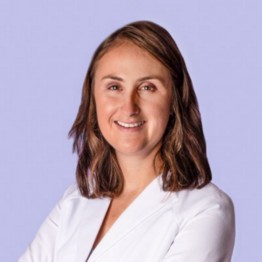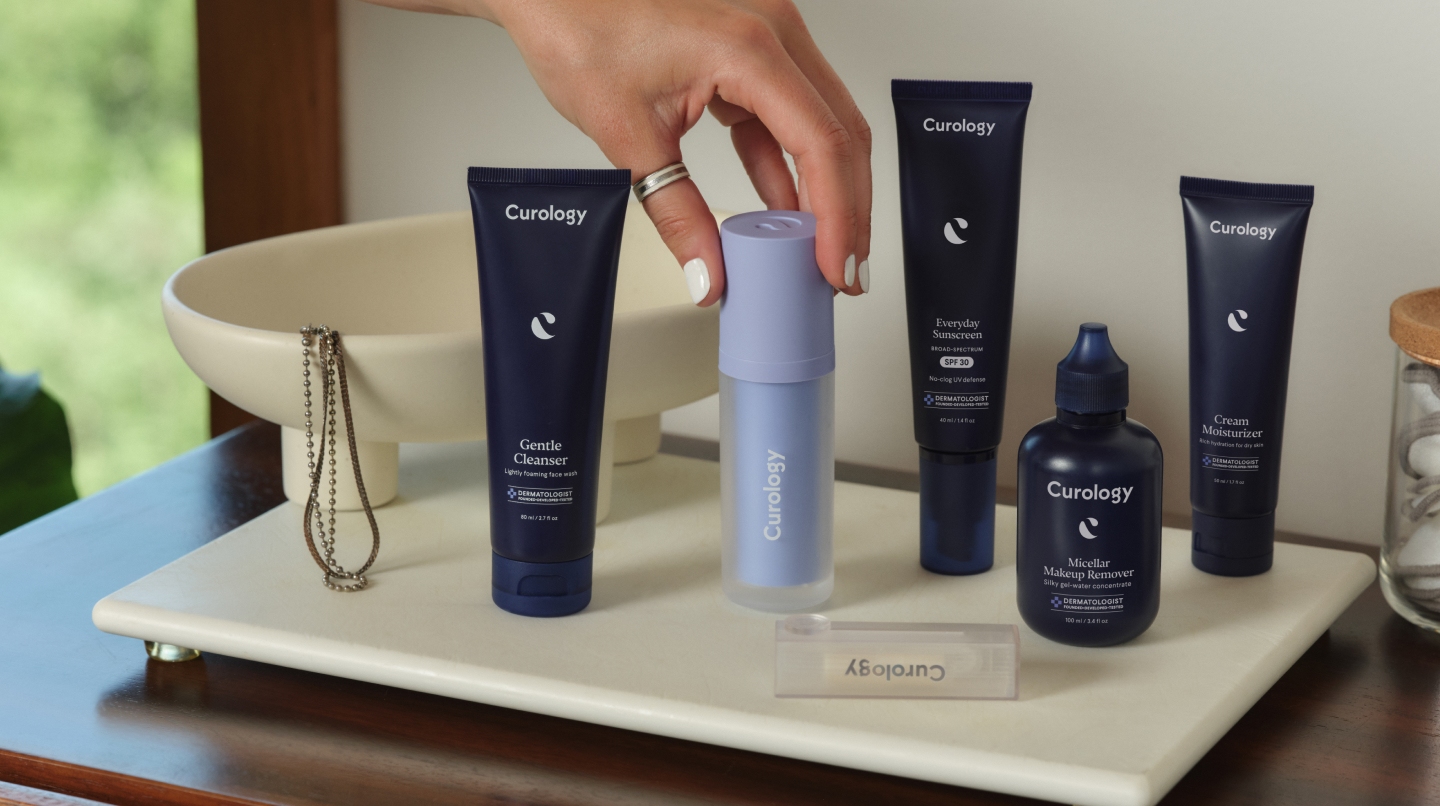How it works:
Share your skin goals and snap selfies
Your dermatology provider prescribes your formula
Apply nightly for happy, healthy skin
How it works:
How it works:
Share your skin goals and snap selfies
Your dermatology provider prescribes your formula
Apply nightly for happy, healthy skin
How it works:
Acne vs. pimples: What’s the difference?
Are acne and pimples the same thing?



Pimples. Zits. Most everyone is familiar with these words, regardless of their skin type. After all, both are cornerstones of almost every teenager’s vocabulary, and the same goes for many adults. Most people, teenagers or not, use words like “pimples” and “zits” interchangeably to refer to acne lesions.
But what’s the difference between them? Are pimples the same as zits? And are pimples and zits the same as acne? In short, yes! But there’s a lot more to that answer that’s worth knowing. Not only because knowledge is power, but because understanding the lingo is the first step in learning what causes acne, how to clear it up, and how to help prevent future breakouts too. So, let’s explore.
What different types of acne exist?
The first thing you need to know about pimples and zits is that they come in many different forms. After all, there are several different types of acne. If that comes as news to you, don’t worry—when you experience a breakout, the only thing you probably care about is making it go away as quickly as possible. That’s completely understandable! But we’re here to help you understand exactly what kind of acne you might be experiencing, and how you can best get rid of it.
Step one is learning all about the various types of acne, what causes them, and how you can help treat them and prevent them.
Here we go:
Acne vs. pimple difference: Many people use the word “pimple” to refer to any type of acne. There’s no officially agreed-upon definition for a pimple, medically speaking. Technically speaking, a pimple is a symptom of acne vulgaris, which is a common chronic skin condition (“vulgaris” is Latin for “common”). Acne vulgaris is characterized by a combination of more than one type of blemish (more on that below).¹
Acne vs. pimples vs. zits: The word “zit” is just another term for “pimple.” A synonym, so to speak (but, again, not medically speaking!).
Rosacea pimples vs. acne: If you’re experiencing rosacea, you may notice acne-like breakouts. Rosacea can include lesions that appear similar to acne but are not actually acne.²
Different types of acne

We’ve talked about understanding the difference between acne, pimples, and zits ( they’re all synonyms), but that’s just the tip of the iceberg. The truth is, we’re just getting started. Several different types of acne exist, each with its own contributing factors and ways to treat and help prevent it:
Whiteheads. Whiteheads are closed comedones that occur when a follicle is blocked with excess oil and dead skin cells. Salicylic acid can be an effective treatment for whiteheads because it helps clear out pores.³
Blackheads. Blackheads are also comedones, like whiteheads, except they are open to the air. Like whiteheads, salicylic acid can treat comedones like blackheads, either as a face wash or toner.
Papules. When you use the word “pimple,” you might be referring to papules. They’re red or pinkish bumps that don’t contain pus. Benzoyl peroxide is a great ingredient for treating papules because it fights C. acnes, the bacteria that contributes to inflammatory acne.⁴
Pustules. This one’s easy to remember; it’s all in the name. Unlike papules, pustules are filled with pus and usually have a white head with a red ring around them. Like papules, benzoyl peroxide is also a good treatment for pustules.
Cysts. Cysts are larger, pus-filled lesions that are often painful and can lead to scarring. Benzoyl peroxide, topical antibiotics, and topical retinoids can treat cysts,⁵ but because they are a more severe type of acne, your medical provider may prescribe a stronger treatment.
Nodules. These are hard, don’t contain pus, and appear deeper under the skin, which is why they’re sometimes called blind pimples. Like cysts, nodules can be treated in several ways, including benzoyl peroxide, topical retinoids, or possibly isotretinoin.⁶
What could be causing your acne
Pimples are formed from several different contributing factors. When excess oil (sebum) is produced by the sebaceous gland and combines with excess dead skin cells, they can clog the hair follicle. Bacteria (C. acnes) thrive in the excess sebum and lead to inflammation,⁷ causing acne lesions such as papules, pustules, cysts, and nodules.
So, what can set off this process?
Hormones. One of the major causes of acne for many people is fluctuating hormones, either during adolescence or during the menstrual cycle. Androgens, a type of hormone, can cause sebaceous glands to increase in size, and excess sebum is produced as a result.⁸
Genetics. Genetics can contribute to breakouts,⁹ but before you start blaming your parents, know that no matter the cause, acne is treatable!
Comedogenic ingredients. Your makeup, hair, and even some skincare products could have ingredients that are comedogenic or pore-clogging. Keep an eye out for products that are specifically labeled non-comedogenic in order to keep your pores as clear as possible.¹⁰
Stress. Stress doesn’t directly cause breakouts directly, but it has been linked to worsening acne. So do whatever you can—a walk, a workout, or even a minute or two of deep breathing—to keep calm.
Skin purging. If you just started a new acne medication, your skin could go through a purging phase where it actually gets worse before it starts to get better. Don’t worry. This is completely normal, which is why it’s important to give any new treatment at least a few weeks to work.
What are some tips to help prevent breakouts?
If you’ve experienced acne, you may wonder how you can prevent it. When it comes to treating and helping to prevent acne, there are so many different emerging options. For example, a recent study showed that vitamin B5 might be beneficial for reducing facial lesions, but more studies are still needed.¹¹ For now, let’s look at some tried-and-true ways that may help prevent acne.
Don’t pop. Squeezing pimples may be tempting, but it’s not good for your skin—so do your best to resist the temptation. When you pop a pimple, you can push the contents of the acne lesion deeper into the skin and cause more inflammation.¹²
Wash your face. Using a gentle facial cleanser once or twice a day is a simple step that may help you prevent future breakouts.
Use moisturizer. A great moisturizer for your face can help keep dryness away. Dryness can lead to irritation, which can also contribute to breakouts.
Use non-comedogenic products. Just because you have acne doesn’t mean you need to throw out your makeup. If you love wearing makeup, you can continue to do so—just make sure you’re sticking to products that don’t contain pore-clogging ingredients.
Spread acne medication everywhere. If you use topical acne medication, like those that contain benzoyl peroxide or salicylic acid, make sure to use it everywhere on your face where you’re prone to breakouts—not just where you currently have acne. This will help prevent future blemishes while treating current ones.
Gentle exfoliation. Exfoliation can be a great way to help clear pores and remove dead skin cells from your face, but if you scrub too hard, you can irritate your skin.
Rinse with warm water. Super-hot water may feel good, but it can dry out or irritate your skin. Instead, always use lukewarm water to wash your face.
Consult a dermatologist. A dermatologist will be able to help give you specific advice, just like Curology’s licensed dermatology providers can answer your skincare questions. If you want a little extra guidance to prevent future breakouts, asking a medical professional can never hurt.

Get your personalized skincare routine with Curology
Get your personalized skincare routine with Curology


Curology customized skincare
Curology is designed to make dermatology services accessible for everyone. As a Curology member, you receive a personalized treatment plan with skin care products designed by dermatologists right to your door. Have confidence knowing you're using medically proven ingredients on your skin. Showing your skin some love has never been easier, thanks to Curology — and you can get your first month free.*
FAQs
Whiteheads. Closed comedones that occur when a follicle is blocked with excess oil and dead skin cells.
Blackheads. Are also comedones, except they are open to the air.
Papules. They’re red or pinkish bumps that don’t contain pus.
Pustules. Filled with pus and usually have a white head with a red ring around them.
Cysts. Larger, pus-filled lesions that are often painful and can lead to scarring.
Nodules. Hard, don’t contain pus and appear deeper under the skin.
Vitamin B5 might be beneficial for reducing facial lesions, but more studies are still needed. For now, let’s look at some tried-and-true ways that may help prevent acne:
Wash your face
Use moisturizer
Use non-comedogenic products
Spread acne medication everywhere
Gentle exfoliation
Rinse with warm water
Consult a dermatologist
Pimples are formed from several different contributing factors. When excess oil (sebum) is produced by the sebaceous gland and combines with excess dead skin cells, they can clog the hair follicle. Bacteria (C. acnes) thrive in the excess sebum and lead to inflammation, causing acne lesions such as papules, pustules, cysts, and nodules.
P.S. We did the research so you don’t have to:
Titus S. and Hodge J. Diagnosis and Treatment of Acne Vulgaris. American Family Physician. (2021 October 15).
Gallo, R. L., et al. Standard classification and pathophysiology of rosacea: The 2017 update by the National Rosacea Society Expert Committee. Journal of the American Academy of Dermatology. (2018).
Zaenglein, A. L., et al.Guidelines of care for the management of acne vulgaris. Journal of the American Academy of Dermatology. (2016, February 17).
Zaenglein, A. L., et al.Guidelines of care for the management of acne vulgaris. Ibid.
Cleveland Clinic. Cystic Acne. ( 2021, August 25).
Newman, M.D., et al.Therapeutic Considerations for Severe Nodular Acne.Am J Clin Dermatol (2012 ,September 10).
Sutaria, A. H., et al. Acne Vulgaris. In StatPearls. StatPearls Publishing. (2022).
Elsaie M. L. Hormonal treatment of acne vulgaris: an update. Clinical, cosmetic and investigational dermatology. (2016, September 2).
Di Landro A., et al. Family history, body mass index, selected dietary factors, menstrual history, and risk of moderate to severe acne in adolescents and young adults. J Am Acad Dermatol. (2012, March 2).
American Academy of Dermatology. I have acne! Is it okay to wear makeup? (n.d.).
Yang M., et al. Yang, Michael et al. A randomized, double-blind, placebo-controlled study of a novel pantothenic Acid-based dietary supplement in subjects with mild to moderate facial acne. Dermatology and therapy. (2014, May 16).
American Academy of Dermatology. Pimple Popping: Why only a dermatologist should do it. (n.d.).
*Trial is 30 days +$4.95 S&H. Subscription required. Subject to consultation.

Curology Team

Allison Buckley, NP-C
Related Articles
Why am I still breaking out with a good skincare routine? Experts explainHow to remove makeup without makeup remover wipesThe complete guide to face cleansers for every skin typeDoes dermaplaning cause acne? Experts explainThe 6 best chemical exfoliators for glowing skinPopular Articles
Ask Curology: Is my cold breaking me out?Slugging: The dermatologist-approved skincare hack going viral on TikTokTretinoin vs retinol: What’s the difference?How to create a self-care routine that actually sticksYour 2023 skincare horoscopeTry prescription skincare
Get routine essentials

Good skin days ahead
- Breakouts
- Redness
- Fine lines
- Dark spots
- Hair thinning